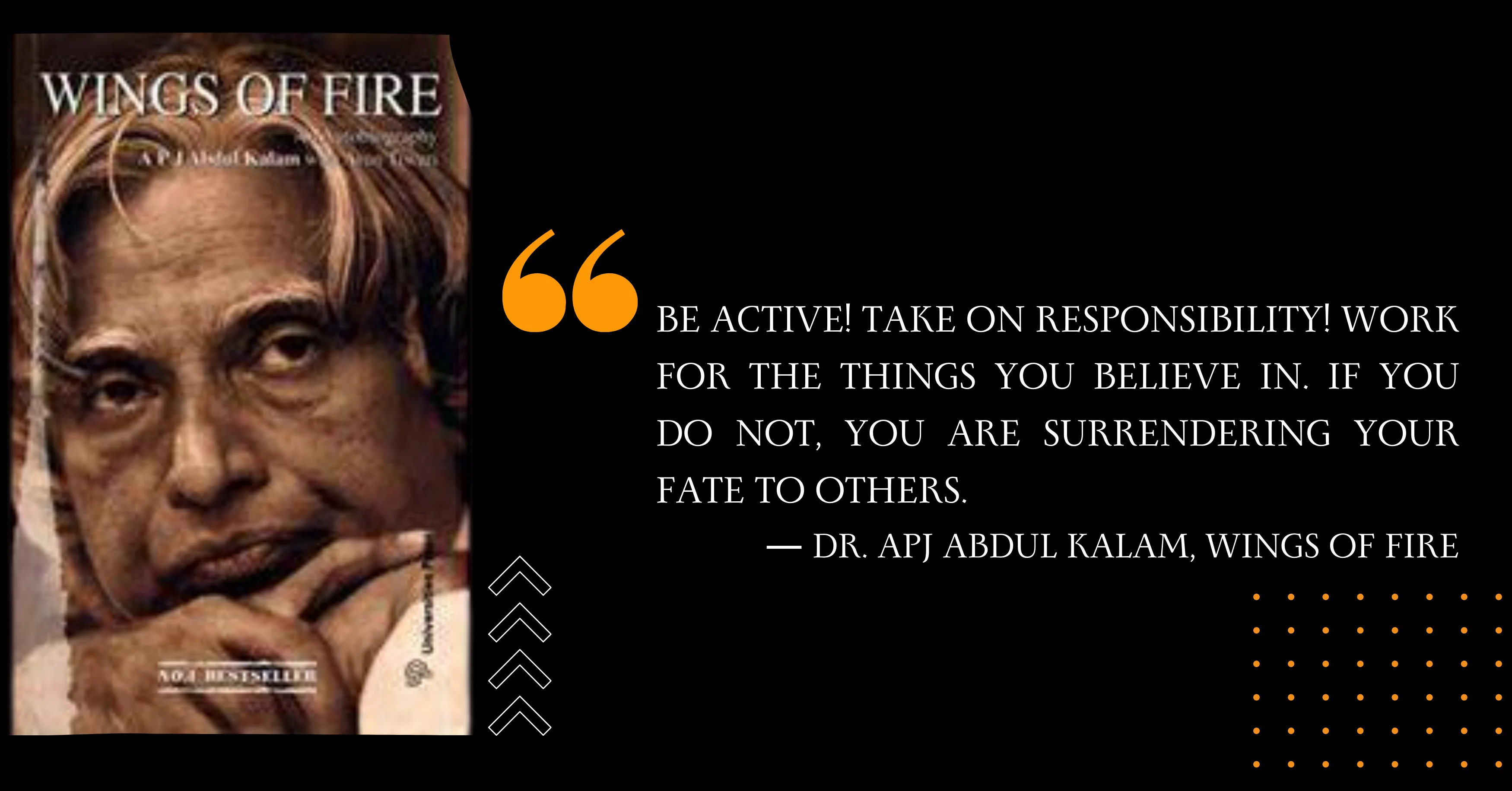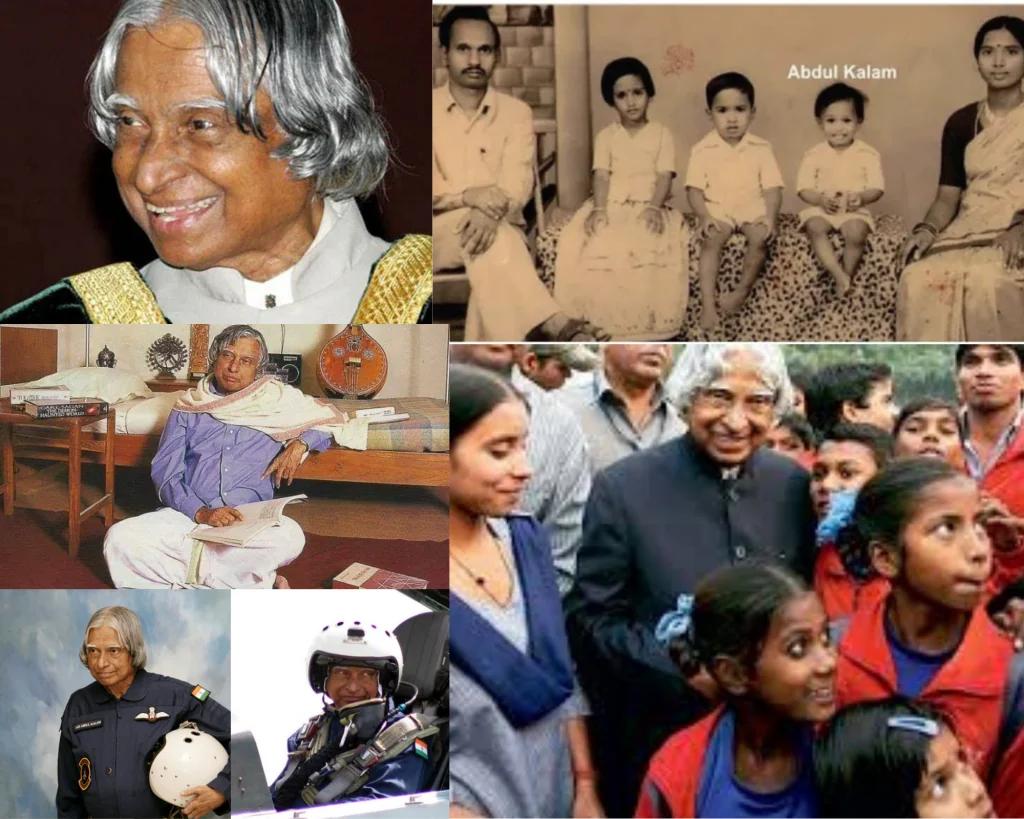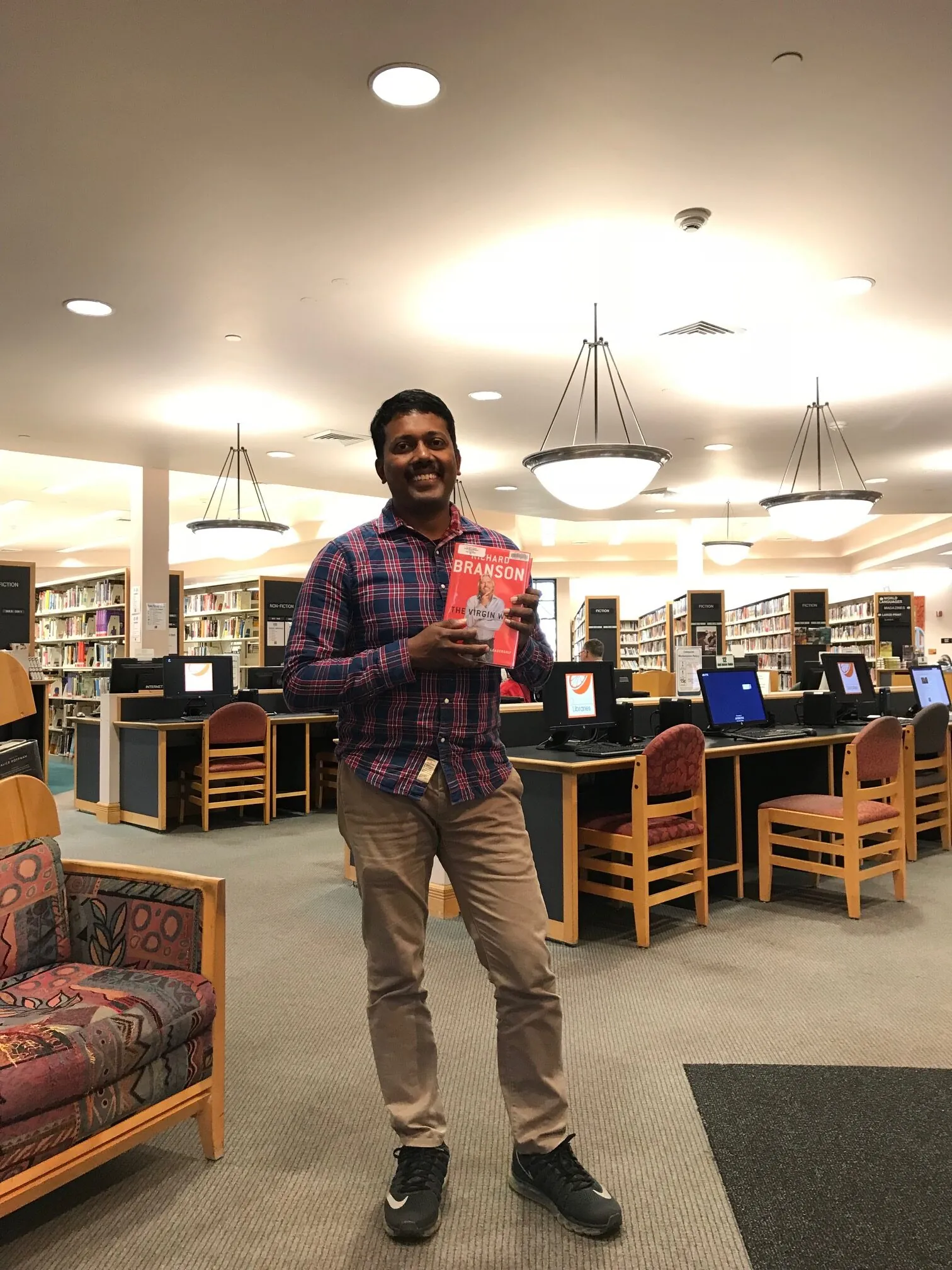Lessons from Dr. A. P. J. Abdul Kalam’s Wings of Fire
Dr. A. P. J. Abdul Kalam, the former President of India, was not only a great scientist and technocrat but also a visionary leader and an inspiring teacher. His autobiography “Wings of Fire” is a testament to his unwavering commitment to excellence, dedication to his work, and the power of his belief in the human spirit.
If you’re looking for motivation and guidance on your path to success, this book is must-read. Here are some of my learnings from the book.
Early Life
Abdul Kalam’s early life was shaped by a diverse and inclusive community, where he learned the value of respecting people regardless of their caste or religion. He had Hindu, Christian, and Muslim friends who helped him achieve success.
Dr. Kalam has the early habit of reading (Thanks to STR Manickam and his library). Dr. Kalam spent much of his childhood with Ahmed Jallaluddin (who married his sister Zohara) & his first cousin Samsuddin. This helped shape his future life. Dr. Kalam learned honesty and self-discipline from his father and kindness from his mother.
Dr. Kalam went to Schwartz High School in Ramanathapuram, and his teacher Iyadurai Solomon was an ideal teacher. Dr. Kalam enjoyed reading books on cosmology and celestial bodies.
His teacher Iyadurai Solomon left a lasting impression on Kalam, who saw him as an ideal teacher. Kalam’s curiosity about the cosmos and celestial bodies was also evident from an early age, and he spent countless hours devouring books on the subject.
One significant event that shaped Kalam’s future was participating in an essay competition organized by the M.I.T. Tamil Sangam (Literary Society). His article, “Let us make our own Aircraft,” showed his innate passion for technology and innovation, and laid the foundation for his future endeavors as a renowned aerospace scientist.
Early Career
Dr. Kalam also encounters his experience of being rejected by the Indian Air Force, and he gets a job with the Directorate of Technical Development and Production (DTD&P (Air) as a Sr. Scientific Assistant at a basic salary of Rs. 250/month.
Dr. Kalam writes about his work on the Nandi Hovercraft and his interactions with Prof. M.G.K Menon, Director of the Tata Institute of Fundamental Research (TIFR). He was later recruited by INCOSPAR -Indian Committee for Space Research, to organize Space Research in India. Dr. Kalam was also sent to America for training and also worked at NASA in the early 1960s.
Dr. Vikram Sarabhai
Dr. Kalam writes in detail about the contribution of Dr. Vikram Sarabhai to India’s space research and progress. He is a visionary. Dr. Sarabhai was great at Team building, an ideal experimenter and innovator.
Dr. Kalam also thanks the vision of then Prime Minister Jawaharlal Nehru and the execution skills of Professor Sarabhai for India’s space progress. Dr. Kalam worked in Thumba near Trivandrum. Dr. Sarabhai would never give directions and provide freedom to fail and experiment with the team.
He would also get a lot of external help from the developed world. (hiring consulting talent from the best). Dr. Srabhai’s team was understaffed and under-equipped. However, his team was very successful. In one of his team meetings, Dr. Kalam let his entire team present, and he was just quiet.
One of the other scientists questioned Dr. Kalam’s contribution to the team. Dr. Sarabhai was angry at this, and he articulated that leadership is about letting the team perform to the fullest of its potential.
Satellite Launch Vehicle (S.L.V.)
Prof. Sarabhai, in 1969, decided to build indigenous capability in launching our own satellites. He selected Sriharikota Island (100 km North of Chennai), and the SHAR Rocket Launch station was born.
In 1968 Indian National Science Academy (INSA) and Indian Space Research Organization (ISRO) were created under the Department of Atomic Energy (D.A.E.).
In 1975, ISRO became a Government body. Dr. Kalam highly encouraged his colleagues to do daily experiments. It is unfortunate that Dr. Vikram Sarabhai passed away at an early age due to cardiac arrest. Dr. Kalam considers Prof. Vikram Sarabhai as Mahatma Gandhi of Indian Science.
During Dr. Kalam’s work in the S.L.V. 3 project, his brother-in-law and mentor, Jenab Ahmed Jallaludin, passed away. Dr. Kalam’s father was over 100 years old. Dr. Kalam traveled overnight in district buses to reach Rameswaram.
Jallaludin went into a long sleep, and death has never frightened Dr. Kalam. In 1976, Dr. Kalam’s father passed away when he was 102, and in a short span, Kalam lost his mother as well. Dr. Kalam then traveled to France to learn and gain insights.
Dr. Kalam worked closely with Dr. Brahm Prakash. Wernher von Braun, who made lethal V 2 missiles that devastated London in the 2nd World War, was visiting India. Dr. Brahm Prakash tasked Dr. Kalam to receive von Braun from the Madras Airport. It was a great learning experience for Dr. Kalam to interact with von Braun, where von was always curious and a student. Dr. Kalam’s leadership style was to praise publicly and criticize privately. Dr. Brahm Prakash played a key role in shaping Kalam’s leadership.
Dr. Sathish Dhawan
The initial S.L.V. 3 was a failure, and Dr. Kalam stood up and took responsibility for this. It impressed Dr. Sathish Dhawan, who was running ISRO at that time.
Dr. Kalam was entrusted with making the launch successful. Dr. Kalam credits the success of SLV3 to his incredible team. On 18 July 1980, at 08:03 hours, India’s first satellite launch vehicle lifted off from SHAR. Dr. Kalam has mixed feelings.
He was sad that his Dad, Jallaluddin, and Dr. Sarabhai were not alive to taste this success. Dr. Kalam credits SLV3’s success to Dr. Brahm Prakash, Dr. Dhawan, Dr. Vikram Sarabhai, and the entire team behind the project.
Prime Minister Indra Gandhi
The success of SLV3 also led to Dr. Sathish Dhawan and Dr. Kalam meeting with the then Prime Minister of India – Indra Gandhi. Dr. Gandhi also asked Dr. Kalam to speak.
Dr. Kalam got a lot of media attention, and it also created envy amongst some of his colleagues. Dr. Kalam was conferred with Padma Bhushan during the Republic Day of 1981.
Defence Research & Development Laboratory (DRDL)
Dr. Kalam got an opportunity to join and lead DRDL – Defense Research and Development Laboratory. ISRO was not too keen on relieving Dr. Kalam, and they had it all worked out. Dr. Kalam joined DRDL on 1 June 1982.
During his work at DRDL, Dr. Kalam writes about his working together with Dr. Arunachalam and also the encouragement he received from the then-Defense Minister Venkataraman.
Dr. Kalam’s chairmanship was instrumental in creating indigenous missiles in India. Getting the team organized, hiring the best talent, and inculcating Teamwork were some of Dr. Kalam’s primary work. He built the team from the ground up. During this work, Dr. Kalam and Dr. Arunachalam presented a proposal to the then Defense Minister Venkataraman.
A budget of over Rs. 390 Crores was approved (spread over 12 years). The wedding of Dr. Kalam’s niece was the next day, and Dr. Kalam could not make it on time. He was guilty. Dr. Arunachalam was very kind to tell this to the Minister, who arranged an air force from the Airforce to fly from Madras to Madurai. Dr. Kalam was in time for the wedding.
India’s self-reliance was created with the launch of IGMDP – Integrated Guided Missile Development Program. ( Prithvi, Trishul, Akash, Nag, and Agni). On 19 July 1984, Indra Gandhi visited DRDL, and it was sad to see her assassinated months later. Dr. Kalam also writes about his encounters with the then Prime Minister Rajiv Gandhi.
Dr. Kalam recruited talent from across the country. It was great for older scientists to work with young scientists. During Agni’s first launch, they had to evacuate people from nearby villages. Agni’s first launch did not go well. However, Dr. Kalam’s past experiences served him well. When Agni finally took off, it was a perfect launch. The missile launches were 100% indigenous efforts.
Simple Life
On the republic day of 1990, Dr. Abdul Kalam was conferred with the Padma Vibushan along with Dr. Arunachalam (the second-highest civilian award in India). He still lived in a room 10 feet wide and 12 feet long, furnished mainly with books, papers, and a few hired pieces of furniture. Dr. Kalam also recalls giving speeches at various colleges and universities.
In one of the speeches in Madurai, he was delighted to be joined by Iyadurai Solomon, his high school teacher (who was 80 years old). When Dr. Kalam turned 60, he was ready to retire and set up the Rao Kalam school with his friend Prof. P. Rama Rao. The government had other plans for him. Dr. Kalam says that no one, however small, poor, or underprivileged, does not have to feel disheartened about life.
2-3 Things a Day
Dr. Kalam has the habit of morning walks and coming up with a schedule. He used to plan on achieving 2-3 things a day, and also one of those things should contribute to the long-term goal.
Dr. Kalam read a lot of Khalil Gibran. He also quotes George Bernard Shaw. All reasonable men adapt themselves to the world. A few unreasonable men persist in adapting the world to themselves. All the progress in the world depends on these unreasonable men. The book ends with Dr. Kalam’s tenure at DRDL and the launch of Agni.
My Take on the Book
This is a book I should have read a lot earlier. However, I am really glad I read it now. Anytime an inch of ego gets into you or a sense of pride that ‘I am responsible for this success’ creeps in, you should remember Dr. APJ Abdul Kalam and his book – Wings of Fire. I only wish I had also met him and discussed my learnings with Dr. Kalam. I am also very thankful to Arun Tiwari for co-writing this book. Thanks for documenting all these learnings. Dr. A.P.J Abdul Kalam will inspire generations to come. Thank you for inspiring us, Dr. Kalam.





Leave a Reply